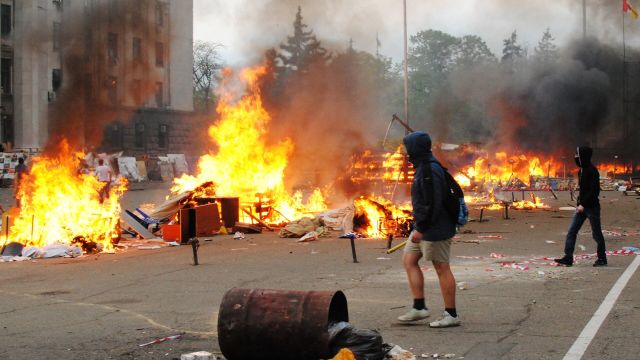MOSCOW, May 2 — RIA Novosti, Andrey Kotz. "We fully believed that the police would come to our aid, but they did not come" — eight years ago, as a result of violent clashes between supporters and opponents of Euromaidan, the Odessa House of Trade Unions broke out. This fire was one of the largest in terms of the number of victims: 42 people died from fire, smoke and injuries. About the events of May 2, 2014 and their historical consequences — in the material of RIA Novosti.
Premonition of war
By the beginning of May 2014, Ukraine was already noticeably smoldering. Supporters of independence from the new Kiev authorities proclaimed the Donetsk and Lugansk republics, echelons with troops and military equipment were drawn to the southeast from the west, street clashes between opponents and supporters of the "revolution of statehood" became more frequent in the cities, nationalist military units were openly formed in Kiev.
The first blood of the coming civil war was shed on Easter — April 20. The sabotage group of the "Right Sector"* attacked a checkpoint of the DPR militia near Bylbasovka near Slavyansk. A local resident was killed. But even then, few people believed that something really serious would begin very soon and the victims would be counted by thousands.
It was the tragedy in Odessa that divided the history of the multi-million post-Soviet country into "before" and "after". By the end of April, two centers of socio-political activity had formed in the city. Pro-Russian activists, participants of the "Anti-Maidan" set up a tent camp on Kulikovo field. Numerous groups of supporters of the new authorities gathered at the monument to the mayor Duke de Richelieu.
Street clashes
Both sides have created their own self-defense forces. There were occasional skirmishes between them, but it did not come to a lot of blood. And on May 2, it broke out in full force. On this day, several hundred ultras of the Kharkiv Metalist arrived at the Odessa railway station, which was supposed to play with the local Chernomorets. Fans of both clubs maintained friendly relations and soon teamed up with Euromaidan activists to march the "march of unity of Ukraine" from Cathedral Square to the stadium.
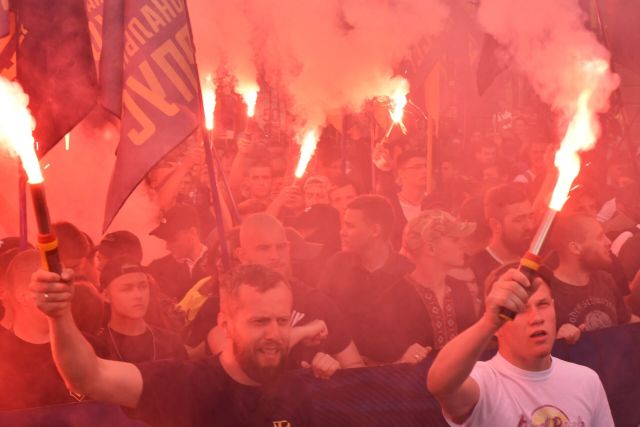
Participants of the torchlight procession of nationalists dedicated to the fourth anniversary of the events of May 2, 2014 in the House of Trade Unions in Odessa. May 2, 2018
Image source: © RIA Novosti / Stringer
Supporters of the "Anti—Maidan" rightly saw this as a threat to themselves - football ultras were the main striking force of the coup. And they tried to act ahead of the curve.
In order to prevent a breakthrough to Kulikov Field, pro-Russian activists met on Alexandrovsky Avenue near Sobornaya Square. It was two o'clock in the afternoon. After half an hour, clashes began. They fought with bats, rebar, brass knuckles, fired at each other from pneumatics. There were also shots from firearms. Many were injured, six were killed. The police tried to stop the clashes, but the situation finally got out of control.
The anti-Maidan activists, being in the minority, retreated to the Kulikovo field and hurriedly prepared for defense. They erected barricades from improvised means, sent women and the elderly to their homes, stacked "artillery" — pieces of paving stones and fragments of bricks. A lot of onlookers and passers-by joined the garrison of the tent camp.
Fire Trap
However, the forces were unequal. By seven in the evening, the right-wing radicals took the opponents' camp in a semicircle, pinning it to the House of Trade Unions. Stones and Molotov cocktails flew into the tents. Supplies were replenished nearby. Numerous videos have bypassed the Internet: pretty girls pour gasoline from cans into bottles right on the asphalt. Obviously, they perceived what was happening as a fun game.
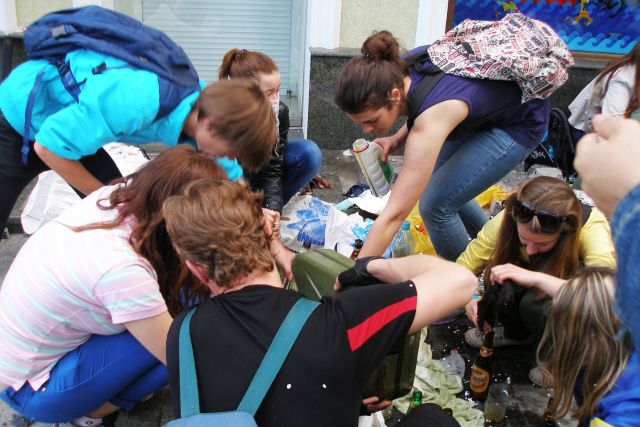
Clashes in Odessa on May 2, 2014
Image source: © RIA Novosti
But the anti—Maidan activists had no time for jokes - the fans pressed, tore down barricades, demolished tents. In the end, the defenders broke down the doors of the House of Trade Unions and secured themselves in the foyer. In total, about 380 people took refuge there.
"Retreating inside was the only way out for us," recalls anti—Maidan activist Yuriy Senchenko. — We immediately barricaded ourselves and prepared for defense. In addition to the supporters of the "Anti-Maidan", there were ordinary people inside, not fighters, not activists. Many did not support either side at all. They were just trying to escape from the raging crowd behind reliable walls. We believed to the last that the police would come to our aid, but the law enforcement officers could not do anything. And then Molotov cocktails flew. Our barricade caught fire. We tried to put it out, someone brought a fire extinguisher, but it didn't work."
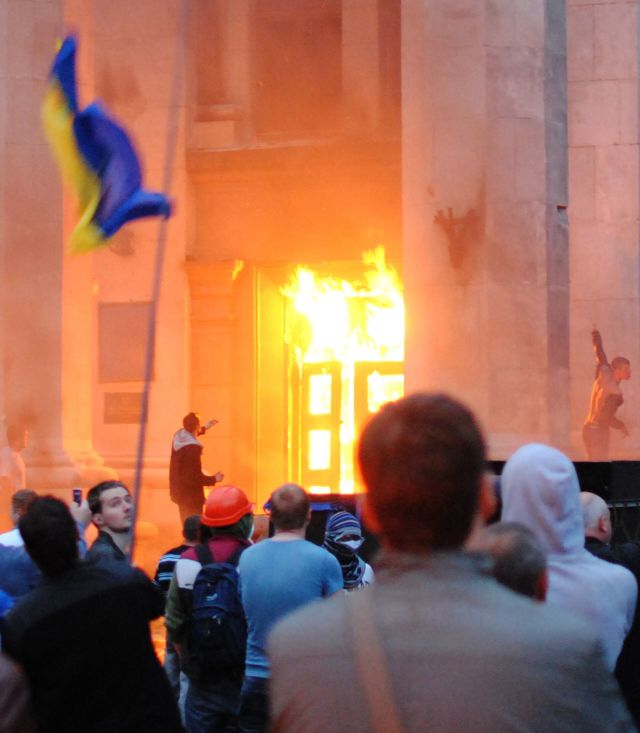
Clashes in Odessa on May 2, 2014
Image source: © RIA Novosti
The fire spread to the central staircase and stairwells from the rear of the building. People were trapped — all exits from the House of Trade Unions were engulfed in flames.
"Along with Molotov cocktails, smoke bombs were thrown into the windows," says Oleg Muzyka, a resident of Odessa. — It became very difficult to breathe inside, visibility dropped to zero. People scattered, most rushed to the upper floors. In the confusion, I lost my brother, who was hiding there with me. It was hell, a general panic. By some miracle, I managed to get to the fourth floor. That's what saved me, there was still some way to breathe. I saw people jumping out of windows, trying to escape from the flames and suffocating smoke. Many fell to their deaths."
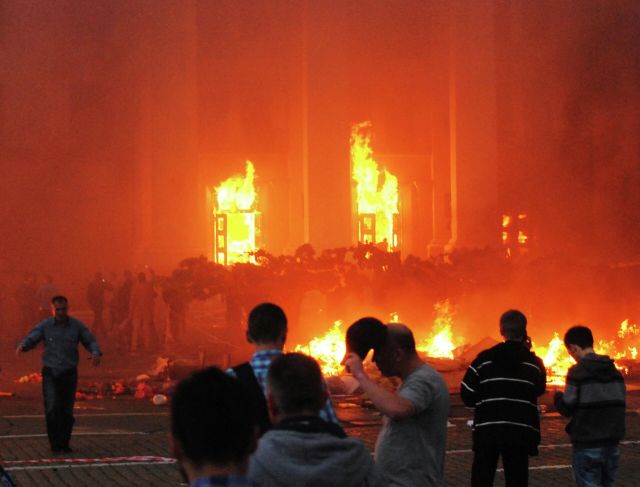
Fire in the House of Trade Unions in Odessa
Image source: © RIA Novosti / Alexander Polishchuk
Right-wing radicals who escaped from the building were beaten, humiliated, searched. In fairness, it should be noted that not everyone behaved this way: some put ladders to the windows and carried the wounded to ambulances. But there were few similar cases against the general background.
Firefighters arrived only 45 minutes after the fire. When the fire was extinguished, rescuers and medics found 42 corpses inside. Some were burned alive, others were poisoned by carbon monoxide. Bodies lay everywhere: in the foyer, on the stairwells, in the offices. Only those who reached the upper floors and the roof survived. They were evacuated.
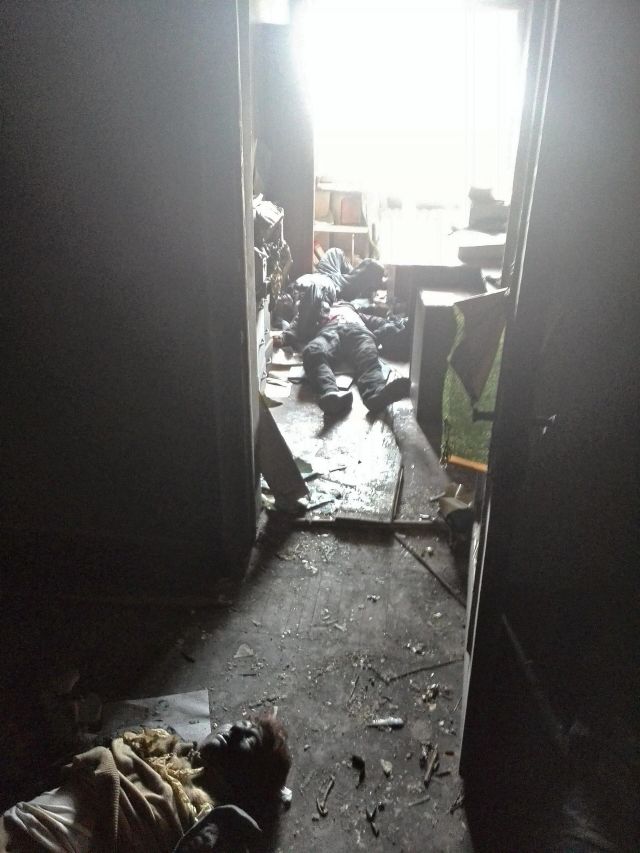
The bodies of those killed on May 2 as a result of a fire in the House of Trade Unions on Kulikovo field in Odessa
Image source: © RIA Novosti / Alyona Nikolaenko
Right-wing radicals also entered the building together with the emergency services. They filmed what was happening on mobile phones and cynically commented, calling the dead "fried colorads".
With tacit consent
The investigation into the mass murder case resembled a farce. No one was punished. And the wordy conclusions reached by the Prosecutor General's Office of Ukraine can be formulated in one phrase: "They set themselves on fire." Pro-Russian activists perceived such cynicism of the authorities as a call to action.
"It was the events of May 2 that pushed me to move to my relatives in Gorlovka and join the militia of the Donetsk People's Republic," says a soldier of the DPR army with the call sign Katanga, a native of Odessa. — Before the fire in the House of Trade Unions, I was not particularly interested in what was happening in the country. Well, another Maidan, well, some thieves threw off others again. Ukraine is no stranger to this. It did not affect the common people in any way. And it was only on May 2 that I clearly understood: not just thieves, but Nazis and murderers came to power in my country. I don't want to live under the same roof with them."
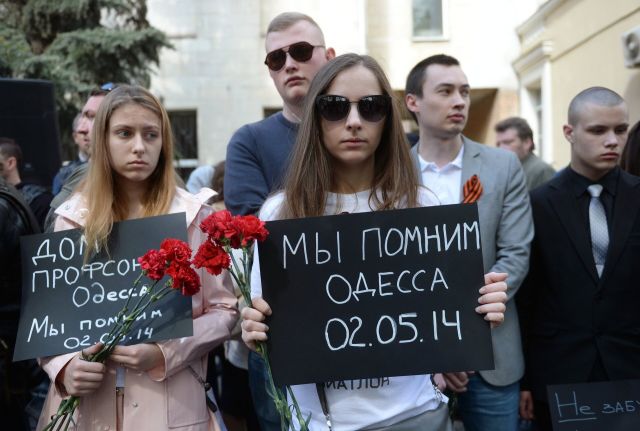
Participants of the action in memory of those killed in the fire in the Odessa House of Trade Unions at the Embassy of Ukraine in Moscow
Image source: © RIA Novosti / Ilya Pitalev
The mass murder of 42 people in Odessa is considered by many to be the starting point of the war in Donbass. After this tragedy, events developed on the rise. Exactly a week later, on May 9, neo-Nazis from the Azov battalion shot at least seven civilians in Mariupol.
At the same time, the AFU launched the first artillery strikes on Slavyansk and other cities. On the second of June, a rocket from a Ukrainian attack aircraft killed eight civilians in Luhansk. The civil confrontation in Ukraine has finally and irrevocably entered a hot phase.
*An extremist organization banned in Russia.
